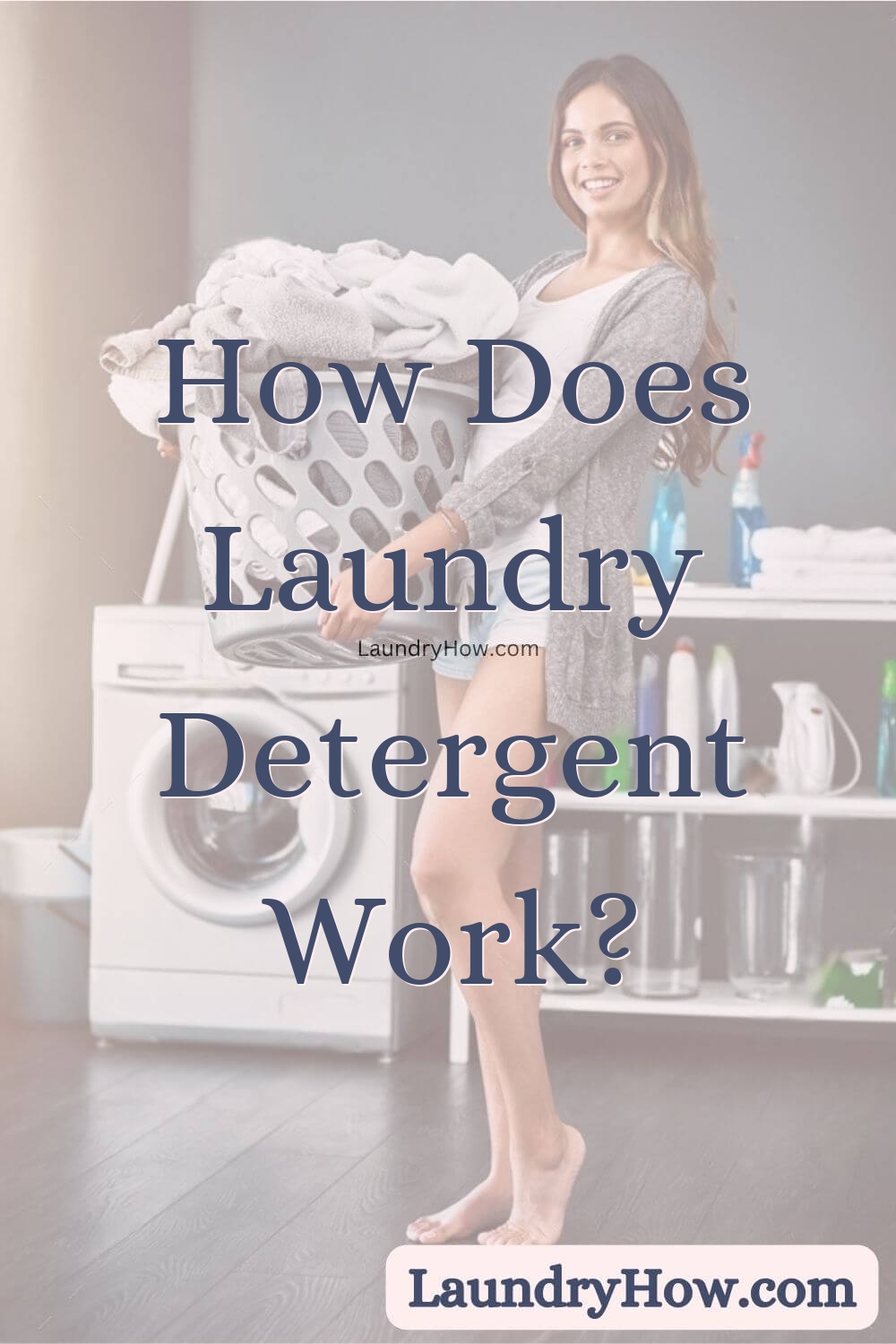Laundry detergent is something most of us use on a regular basis without thinking much about the science behind how it actually works to get our clothes clean. When you put a scoop of Tide or Gain into the washing machine, some pretty amazing chemistry happens in order to lift stains and leave fabrics fresh. Read on to learn all about the ingredients and mechanisms that make our favorite laundry detergents so effective!
Surfactants – The Cleaning Agents
The active cleaning ingredients in laundry detergent are called surfactants, which is short for “surface active agents.” Surfactants are able to bind to both water and oil, which allows them to act at the surface between the solid stains and dirt on your clothes and the water in the wash.
There are four major types of surfactants:
- Anionic surfactants have a negative charge and make up most laundry detergent surfactants. They dissolve well and produce lots of suds.
- Cationic surfactants have a positive charge and are good at killing bacteria.
- Non-ionic surfactants have no charge and are known for their stain-removal abilities.
- Zwitterionic surfactants have both positive and negative charges. They help prevent buildup on fabrics.
Most laundry detergents use a blend of these surfactant types so you get the benefits of all their unique cleaning talents!
Surfactants Loosen Soil
When you put your dirty laundry in the wash, the surfactants get right to work on loosening the soil. Their dual-nature molecular structure allows the water-loving heads to surround dirt, oil, and grease while the water-fearing tails latch onto stains and solid particles. This helps to dislodge the grime from the fabric.
The constant tumbling of the drum also assists the surfactants in separating the oily soils from your clothes. The mechanical energy helps rub the surfactants deeper into fabric fibers to remove stubborn dirt.
Suspending Dirt in Water
In addition to loosening soil, surfactants also work to suspend it in the wash water rather than letting it redeposit back onto clothes. This prevents issues with dingy laundry or graying in the wash load after load. The cleaning agents can essentially surround the loosened dirt molecules with their charged heads pointing out and grease-loving tails turned inward. This allows the soil to stay suspended in water droplets rather than sinking back onto the fabric.
Removing Stains Chemically
Some heavy duty laundry detergents also contain added cleaning agents and pretreators to help boost stain-fighting power chemically. Ingredients like enzyme stain removers and bleaching agents break down stubborn spots and whiten dingy clothes.
Enzymes are proteins that can breakdown specific types of stains biologically. Common laundry enzyme stain fighters include:
- Protease – helps remove protein-based stains like grass, mud or blood
- Lipase – breaks down fats and grease stains from food or makeup
- Amylase – eliminates carbohydrate or sugary stains
- Cellulase – targets cellulose fibers to brighten colors and prevent pills
Bleaching agents like sodium percarbonate release hydrogen peroxide or sodium perborate give off oxygen bleach when dissolved in water. This helps to chemically lift discoloration and brighten whites.
Using a detergent with stain-fighting enzymes and whitening bleaches can help give you even cleaner, brighter laundry!
Why Rinsing Is a Must
After the wash and spin cycle finishes, make sure to rinse your laundry thoroughly, either by using the rinse setting on your machine or running an extra cycle manually. This helps ensure all leftover dirt, grime, and cleaning product residue gets washed away completely. Residual surfactants left in clothes can sometimes cause skin irritation or interfere with absorbency.
Giving your laundry a good rinse also prepares the fibers to absorb fabric softener more evenly in the final cycle. Taking the extra step to rinse guarantees that detergent doesn’t get redeposited onto clean clothes later.
Fabric Softener Leaves Clothes Touchably Soft
Many people add liquid fabric softener to the final rinse cycle or use dryer sheets after washing with detergent. These products make clothes feel soft, fluffy, and comfortable against your skin without impacting the cleaning power of the detergent.
Fabric softener and dryer sheets work by coating the fabric fibers with a thin layer of chemicals that feel smooth and slippery. Common softening ingredients include plant oils, silicones, and cationic surfactants with extra-long tails. These ingredients align themselves along the rough spots on fabric and help smooth down the scales. This gives softened laundry a plush, flexible texture.
So while laundry detergent handles the tough cleaning, fabric softeners make clothes pleasant to touch and help reduce static cling in dry loads. Using both products together gives you maximally clean AND soft clothing – ensuring you look and feel your absolute best!
The Takeaway
Who knew something as mundane as laundry detergent contained so much scientific ingenuity? The advanced cleaning and freshening formulations chemists have developed over the years use complex surfactant molecules, enzymatic stain removers, and whitening agents to give you superior wash power. Just be sure to finish with a rinse and maybe a fabric softener for noticeably cleaner, softer, and brighter clothes load after load. With the science of modern laundry products, it’s never been easier to keep your wardrobe sparkling.
References
- An Introduction to Laundry Detergents and Laundry Products – American Cleaning Institute http://www.cleaninginstitute.org/cleaning-tips/clothes/an-introduction-to-laundry-detergents-and-laundry-prod
- How Do Laundry Detergents Work? The Chemistry Behind Cleaning Clothes – American Chemical Society https://www.acs.org/content/acs/en/education/resources/highschool/chemmatters/past-issues/2016-2017/october-2016/how-do-laundry-detergents-work.html
- Surfactants and How They Work – The Spruce https://www.thespruce.com/surfactants-how-do-they-work-1900905
- Enzymes in Detergent: Understand Enzyme Stain Removers – Tide
https://tide.com/en-us/how-to-wash-clothes/how-to-do-laundry/enzymes-in-detergent

Laura has had an enthusiasm for laundry ever since she was a teenager experimenting with wash cycles. She went on study textile science in college before working in product testing.
Soon, Laura found friends and family constantly asking her laundry advice, realizing she had become an unofficial laundry guru. The questions kept coming in, so Laura decided to start sharing laundry tips online to help more people. The enthusiastic response led her start the blog “Laundry How”.
Now in her late thirties, Laura uses Laundry How to tackle all kinds of laundry topics – stains, fabric care, detergents, and more. She provides advice from both her studies and experience testing techniques out firsthand. Laura continues to grow an engaged community of laundry learners, feeling fulfilled empowering people to make laundry an easy, confidence-building ritual rather than a dreaded chore.
